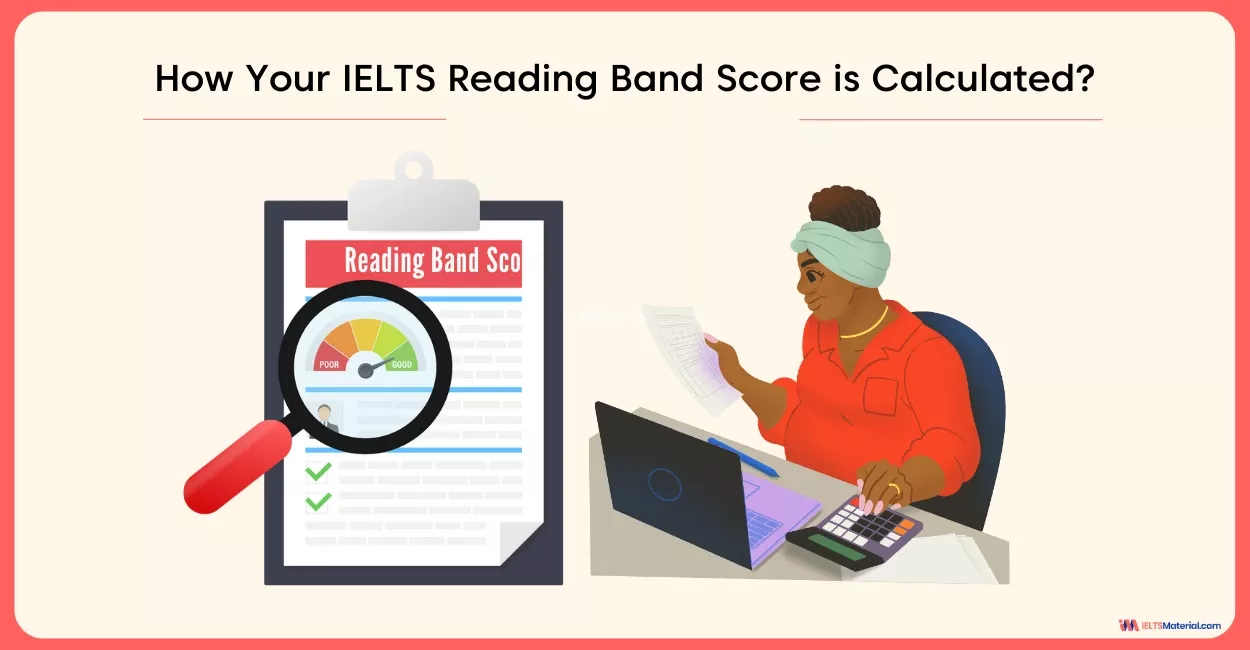Persistent Bullying - IELTS Reading Answers
15 min read
Updated On
-
Copy link
Practice for the IELTS Academic Reading section, focusing on topics such as ‘Persistent Bullying’, and boost your IELTS reading band score and comprehension skills. You will find detailed answer explanations & targeted tips in this blog for a Band 9 prep.
Table of Contents

Limited-Time Offer : Access a FREE 10-Day IELTS Study Plan!
While speed is important in the IELTS Reading test, accuracy is what truly determines your score. Many test-takers rush through questions, only to realize they have misunderstood the passage or misread the instructions. The best way to avoid this mistake is to start practising single passages, like Persistent Bullying IELTS Reading Answers and gradually move your way up to solving complete IELTS Reading practice tests.
In this blog, you will find the answers to the provided Persistent Bullying reading questions, along with detailed explanations and tips. This will help you to improve your performance in the reading module.
If your target is a band score of 9 in IELTS Reading, check out the video below for some exclusive tips!
Passage for Persistent Bullying Reading Answers
Read the passage for Persistent Bullying Reading Answers given below, and prepare for the reading module with similar IELTS Reading topics for General and Academic.
You should spend about 20 minutes on Questions 1-14, which are based on the Reading Passage below.
Persistent Bullying
How can it be prevented? Peter Smith, Professor of Psychology at the University of Sheffield, directed the Sheffield Anti-Bullying Intervention Project, funded by the Department for Education.
Here he reports on his findings.
A Bullying can take a variety of forms, from the verbal – being taunted or called hurtful names – to the physical – being kicked or shoved – as well as indirect forms, such as being excluded from social groups. A survey I conducted with Irene Whitney found that in British primary schools up to a quarter of pupils reported experience of bullying, which in about one in ten cases was persistent. There was less bullying in secondary schools, with about one in twenty-five suffering persistent bullying, but these cases may be particularly recalcitrant.
B Bullying is clearly unpleasant, and can make the child experiencing it feel unworthy and depressed. In extreme cases it can even lead to suicide, though this is thankfully rare. Victimised pupils are more likely to experience difficulties with interpersonal relationships as adults, while children who persistently bully are more likely to grow up to be physically violent, and convicted of anti-social offences.
C Until recently, not much was known about the topic, and little help was available to teachers to deal with bullying. Perhaps as a consequence, schools would often deny the problem. ‘There is no bullying at this school’ has been a common refrain, almost certainly untrue. Fortunately more schools are now saying: There is not much bullying here, but when it occurs we have a clear policy for dealing with it.’
D Three factors are involved in this change. First is an awareness of the severity of the problem. Second, a number of resources to help tackle bullying have become available in Britain. For example, the Scottish Council for Research in Education produced a package of materials, Action Against Bullying, circulated to all schools in England and Wales as well as in Scotland in summer 1992, with a second pack, Supporting Schools Against Bullying, produced the following year. In Ireland, Guidelines on Countering Bullying Behaviour in Post-Primary Schools was published in 1993. Third, there is evidence that these materials work, and that schools can achieve something. This comes from carefully conducted ‘before and after’ evaluations of interventions in schools, monitored by a research team. In Norway, after an intervention campaign was introduced nationally, an evaluation of forty-two schools suggested that, over a two-year period, bullying was halved. The Sheffield investigation, which involved sixteen primary schools and seven secondary schools, found that most schools succeeded in reducing bullying.
E Evidence suggests that a key step is to develop a policy on bullying, saying clearly what is meant by bullying, and giving explicit guidelines on what will be done if it occurs, what records will be kept, who will be informed, what sanctions will be employed. The policy should be developed through consultation, over a period of time – not just imposed from the head teacher’s office! Pupils, parents and staff should feel they have been involved in the policy, which needs to be disseminated and implemented effectively.
Other actions can be taken to back up the policy. There are ways of dealing with the topic through the curriculum, using video, drama and literature. These are useful for raising awareness, and can best be tied into early phases of development, while the school is starting to discuss the issue of bullying. They are also useful in renewing the policy for new pupils, or revising it in the light of experience. But curriculum work alone may only have short-term effects; it should be an addition to policy work, not a substitute.
There are also ways of working with individual pupils, or in small groups. Assertiveness training for pupils who are liable to be victims is worthwhile, and certain approaches to group bullying such as ‘no blame’, can be useful in changing the behaviour of bullying pupils without confronting them directly, although other sanctions may be needed for those who continue with persistent bullying.
Work in the playground is important, too. One helpful step is to train lunchtime supervisors to distinguish bullying from playful fighting, and help them break up conflicts. Another possibility is to improve the playground environment, so that pupils are less likely to be led into bullying from boredom or frustration.
F With these developments, schools can expect that at least the most serious kinds of bullying can largely be prevented. The more effort put in and the wider the whole school involvement, the more substantial the results are likely to be. The reduction in bullying – and the consequent improvement in pupil happiness – is surely a worthwhile objective.
Questions for Persistent Bullying Reading Answers
Persistent Bullying Reading Answers is a passage from Cambridge 6 Reading Test 4 Section 3, which is an excellent resource for anyone who is preparing for the IELTS Academic Reading test.
The 14 questions with this passage, representing three different reading question types, will help you understand what kind of reading passages you will encounter and the questions that you will be asked to solve. The IELTS Reading question types with examples found in this passage are:
- IELTS Reading Matching Headings (Q. 1-4)
- IELTS Reading Multiple Choice Questions (Q. 5-8) & (Q. 14)
- IELTS Reading Summary Completion (Q. 9-13)
Set your timer and start solving this passage!
Questions 1-4
The reading passage has six sections, A-F.
Choose the correct heading for sections A-D from the list of headings below.
Write the correct number, i-vii, in boxes 1-4 on your answer sheet.
List of Headings
i The role of video violence
ii The failure of government policy
iii Reasons for the increased rate of bullying
iv Research into how common bullying is in British schools
v The reaction from schools to enquiries about bullying
vi The effect of bullying on the children involved
vii Developments that have led to a new approach by schools
1 Section A
2 Section B
3 Section C
4 Section D
Questions 5-8
Choose the correct letter, A, B, C or D.
Write the correct letter in boxes 5-8 on your answer sheet.
5 A recent survey found that in British secondary schools
A there was more bullying than had previously been the case.
B there was less bullying than in primary schools.
C cases of persistent bullying were very common.
D indirect forms of bullying were particularly difficult to deal with.
6 Children who are bullied
A are twice as likely to commit suicide as the average person.
B find it more difficult to relate to adults.
C are less likely to be violent in later life.
D may have difficulty forming relationships in later life.
7 The writer thinks that the declaration ‘There is no bullying at this school’
A is no longer true in many schools.
B was not in fact made by many schools.
C reflected the school’s lack of concern.
D reflected a lack of knowledge and resources.
8 What were the findings of research carried out in Norway?
A Bullying declined by 50% after an anti-bullying campaign.
B Twenty-one schools reduced bullying as a result of an anti-bullying campaign.
C Two years is the optimum length for an anti-bullying campaign.
D Bullying is a less serious problem in Norway than in the UK.
Questions 9-13
Complete the summary below.
Choose NO MORE THAN TWO WORDS from the passage for each answer.
Write your answers in boxes 9-13 on your answer sheet.
What steps should schools take to reduce bullying?
The most important step is for the school authorities to produce a 9 ………………. which makes the school’s attitude towards bullying quite clear.
It should include detailed 10 ………………. as to how the school and its staff will react if bullying occurs.
In addition, action can be taken through the 11 ……………….
This is particularly useful in the early part of the process, as a way of raising awareness and encouraging discussion.
On its own, however, it is insufficient to bring about a permanent solution.
Effective work can also be done with individual pupils and small groups.
For example, potential 12 ………………. of bullying can be trained to be more self-confident.
Or again,in dealing with group bullying, a ‘no blame’ approach, which avoids confronting the offender too directly, is often effective.
Playground supervision will be more effective if members of staff are trained to recognise the difference between bullying and mere 13 ……………….
Question 14
Choose the correct letter, A, B, C or D.
Write the correct letter in box 14 on your answer sheet.
14 Which of the following is the most suitable title for the Reading Passage?
A Bullying: what parents can do
B Bullying: arc the media to blame?
C Bullying: the link with academic failure
D Bullying: from crisis management to prevention
Learn to ace IELTS Academic Reading passages with our band 9 experts
Register for our free IELTS online classes today!
Answers for Persistent Bullying with Location and Explanations
Use the answer key below to check your answers for the IELTS Academic Reading passage, Persistent Bullying. Use feedback from this practice to create strategies and master the IELTS Reading question types.
1 Answer: iv
Question type: Matching Headings
Answer location: Paragraph A, line 3 – line 4
Answer explanation: The given lines of Paragraph A says that “A survey I conducted with Irene Whitney found that in British primary schools up to a quarter of pupils reported experience of bullying, which in about one in ten cases was persistent.” As it is clear that Paragraph A mentions how common bullying is in British schools, the answer is iv.
2 Answer: vi
Question type: Matching Headings
Answer location: Paragraph B
Answer explanation: Paragraph B states that “Bullying is clearly unpleasant, and can make the child experiencing it feel unworthy and depressed. In extreme cases it can even lead to suicide, though this is thankfully rare. ….” This points to the fact that this paragraph deals with the effect of bullying on the children who are victimized. Hence the answer is vi.
Unlock Explanations
3 Answer: v
Question type: Matching Headings
Answer location: Paragraph C
Answer explanation: In Paragraph E, the writer said that “Until recently, not much was known about the topic, and little help was available to teachers to deal with bullying. … Fortunately more schools are now saying: There is not much bullying here, but when it occurs we have a clear policy for dealing with it.’” These lines point out that the reaction from schools to enquiries about bullying, which was initially negative, but gradually there are positive changes. Hence, the answer is v.
4 Answer: vii
Question type: Matching Headings
Answer location: Paragraph D
Answer explanation: Paragraph D claims that “First is an awareness of the severity of the problem. Second, a number of resources to help tackle bullying have become available in Britain. …”. As it is clear that this paragraph deals with the three developments that have led to a new approach by schools to reduce bullying, the answer is vii.
5 Answer: B
Question type: Multiple Choice Question
Answer location: Paragraph A, line 3 – line 5
Answer explanation: The mentioned line of Paragraph A says that “…in British primary schools up to a quarter of pupils reported experience of bullying, which in about one in ten cases was persistent. There was less bullying in secondary schools…”. As it is clear that in British secondary schools there was less bullying than in primary schools, the answer is B.
6 Answer: D
Question type: Multiple Choice Question
Answer location: Paragraph B, line 3
Answer explanation: The quoted line in Paragraph B says that “Victimised pupils are more likely to experience difficulties with interpersonal relationships as adults….” It is clear that children who are bullied may have difficulty forming interpersonal relationships in later life (as adults). Hence, the answer is D.
7 Answer: D
Question type: Multiple Choice Question
Answer location: Paragraph C, line 2 – line 5 & Paragraph D, line 1 – line 2
Answer explanation: The last few lines of Paragraph C says that “‘There is no bullying at this school’ has been a common refrain, almost certainly untrue. Fortunately more schools are now saying: There is not much bullying here, but when it occurs we have a clear policy for dealing with it.’”and the first two lines of Paragraph D mentions that “First is an awareness of the severity of the problem. Second, a number of resources to help tackle bullying have become available in Britain.” These two sets of lines point out that the statement had been present due to a lack of knowledge and resources, which when provided lowered the cases of bullying. Hence, the answer is D.
8 Answer: A
Question type: Multiple Choice Question
Answer location: Paragraph D, line 9 – line 11
Answer explanation: The specified lines say that “In Norway, after an intervention campaign was introduced nationally, an evaluation of forty-two schools suggested that, over a two-year period, bullying was halved.” This points out that due to the findings of research carried out in Norway bullying declined by 50% (halved) after an anti-bullying campaign. Hence, the answer is A.
9 Answer: policy
Question type: Summary Completion
Answer location: Paragraph C, line 4 – line 5
Answer explanation: The mentioned line of Paragraph C says that “There is not much bullying here, but when it occurs we have a clear policy for dealing with it.”. As it is clear, the most important step is for the school authorities to produce a policy which makes the school’s attitude towards bullying quite clear. Hence, the answer is ‘policy’.
10 Answer: explicit guidelines
Question type: Summary Completion
Answer location: Paragraph E, line 1 – line 3
Answer explanation: The provided lines says that “…a key step is to develop a policy on bullying, saying clearly what is meant by bullying, and giving explicit guidelines on what will be done if it occurs, what records will be kept, who will be informed, what sanctions will be employed.”. It is clear from the statement that a policy should be developed that would include detailed explicit guidelines as to how the school and its staff will react if bullying occurs.. Hence, the answer is ‘explicit guidelines’.
11 Answer: school curriculum
Question type: Summary Completion
Answer location: Paragraph E, line 7 – line 8
Answer explanation: The following lines from Paragraph E says that “Other actions can be taken to back up the policy. There are ways of dealing with the topic through the curriculum, using video, drama and literature.”. Apart from policy making, steps against bullying can be taken through the school curriculum. Hence the answer is ‘school curriculum’.
12 Answer: victims
Question type: Summary Completion
Answer location: Paragraph E, line 13 – line 14
Answer explanation: The following lines from Paragraph E says that “Assertiveness training for pupils who are liable to be victims is worthwhile…” It is clear from the statement that potential victims of bullying can be trained to be more self-confident (assertiveness). Hence, the answer is ‘victims’.
13 Answer: playful fighting
Question type: Summary Completion
Answer location: Paragraph E, line 18- line 19
Answer explanation: The following lines from Paragraph E says that “One helpful step is to train lunchtime supervisors to distinguish bullying from playful fighting, and help them break up conflicts.” This points out that playground supervision during lunchtimes will be more effective if members of staff are trained to recognise the difference between bullying and playful fighting and help to solve them. Hence, the answer is ‘playful fighting’.
14 Answer: D
Question type: Multiple Choice Question
Answer location: Whole passage
Answer explanation: In the initial paragraphs of the passage the writer discusses the crisis management of schools and various authorities to avoid bullying. Gradually, based on various researches and surveys that were made on this topic, certain steps have been set up that will help in prevention of this evil. Hence, the answer is D (Bullying: from crisis management to prevention).
Learn proven methods to conquer single reading passages within 20 minutes.
Join our FREE IELTS online webinars!
Tips for Answering the Question Types in the Persistent Bullying Reading Passage
Let us check out some quick IELTS exam preparation tips for band score of 8+ and to answer the types of questions in the Persistent Bullying Reading passage.
Matching Heading
Matching Headings questions require you to match headings to the correct sections or paragraphs in a passage. This task tests your ability to understand the main idea of each section. The following are some tips for solving Matching Headings:
- Read Instructions Carefully: Understand what you need to do and how many headings you need to match.
- Identify Main Ideas: Skim each paragraph to grasp its main idea before looking at the headings.
- Highlight Keywords: Highlight key phrases in both the headings and the paragraphs to find matches.
- Eliminate Incorrect Headings: Use the process of elimination to rule out headings that clearly do not fit.
- Match by Meaning, Not Just Words: Look for the overall meaning of the paragraph, not just matching keywords.
Multiple Choice Questions
You will be given a reading passage followed by several questions based on the information in the paragraph in multiple-choice questions. Your task is to understand the question and compare it to the paragraph to select the best solution from the available possibilities. Given below are some tips to help you deal with this question type:
- Before reading the passage, read the question and select the keywords. Check the keyword possibilities if the question statement is short on information.
- Then, using the keywords, read the passage to find the relevant information.
- To select the correct option, carefully read the relevant words and match them with each option.
- You will find several options with keywords that do not correspond to the information.
- Try opting for the elimination method. It will help you to save time and find the actual answer quickly.
- Find the best option by matching the meaning rather than just the keywords.
Summary Completion
In IELTS Reading, a Summary Completion question asks you to find a word or phrase in the passage to fill a gap in a sentence. To answer these questions, you can use the following strategies:
- Read the sentence carefully. It will give you an idea of the type of word or phrase that is missing.
- Scan the passage for the keywords in the sentence, as they can help you to identify the correct word or phrase.
- Read the sentence with the missing word or phrase. In that way, you will see how the word or phrase fits into the sentence.
- Check your answer once you have filled in the gaps. Make sure that your answer makes sense in the context of the sentence.
Finally, remember that time management for IELTS Reading is a crucial skill to develop besides comprehension skills. So, take up more such short reading passages from IELTS recent actual tests for regular practice and work on your shortcomings to achieve your desired band 9 reading score.
Useful Links:
- How to Make Wise Decisions - IELTS Reading Answers
- Left or Right-handed Bathwater - IELTS Reading Answers
- Sugar And Other Sweeteners IELTS Reading Answers
- Bathymetry - IELTS Reading Answers
- Essential Reading For IELTS (Ebook) With PDF
- Useful IELTS Reading Articles, Website Resources and Material for Academic and General Training
Practice IELTS Reading based on question types

Start Preparing for IELTS: Get Your 10-Day Study Plan Today!
Explore other Reading Practice Tests

Kasturika Samanta

Kasturika Samanta

Nehasri Ravishenbagam
Recent Articles

Nehasri Ravishenbagam

Haniya Yashfeen

Haniya Yashfeen

Haniya Yashfeen





Post your Comments
1 Comment